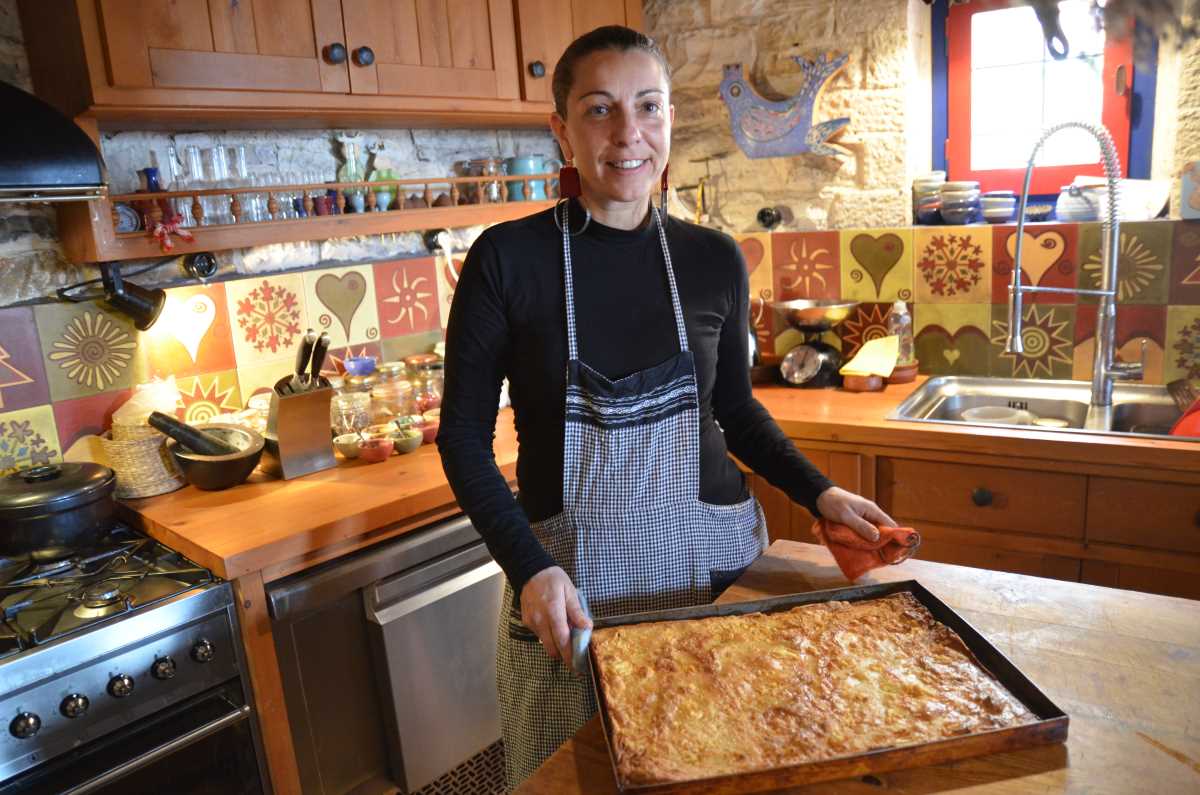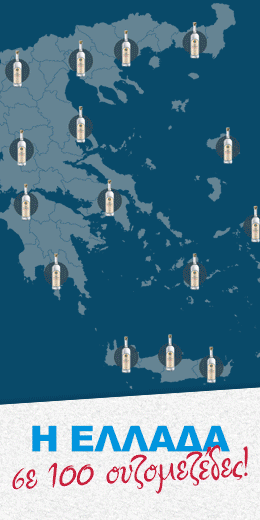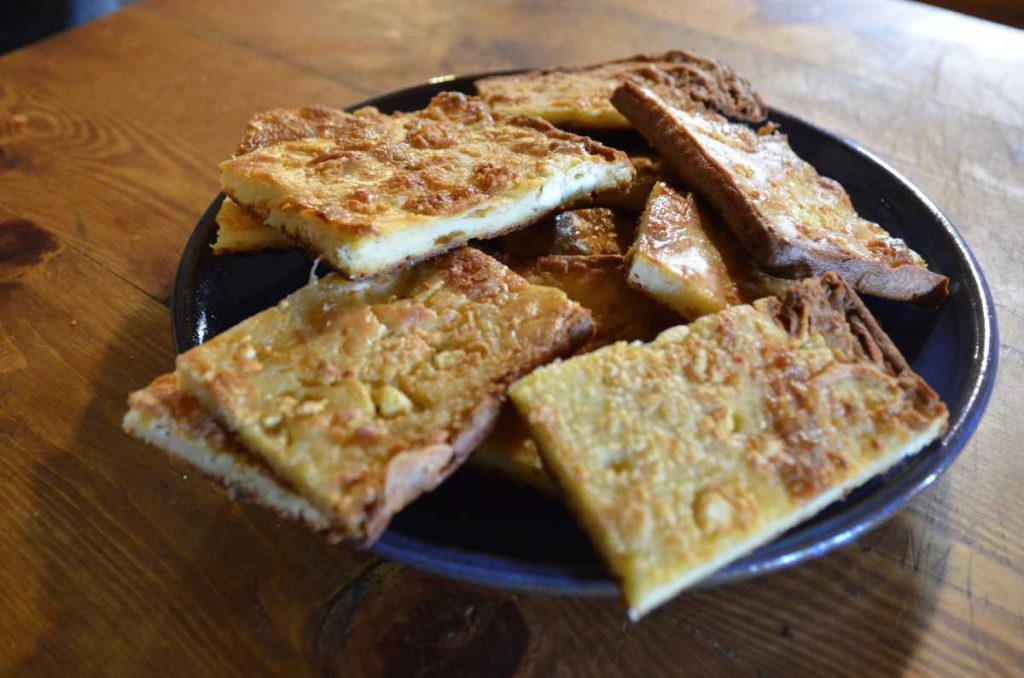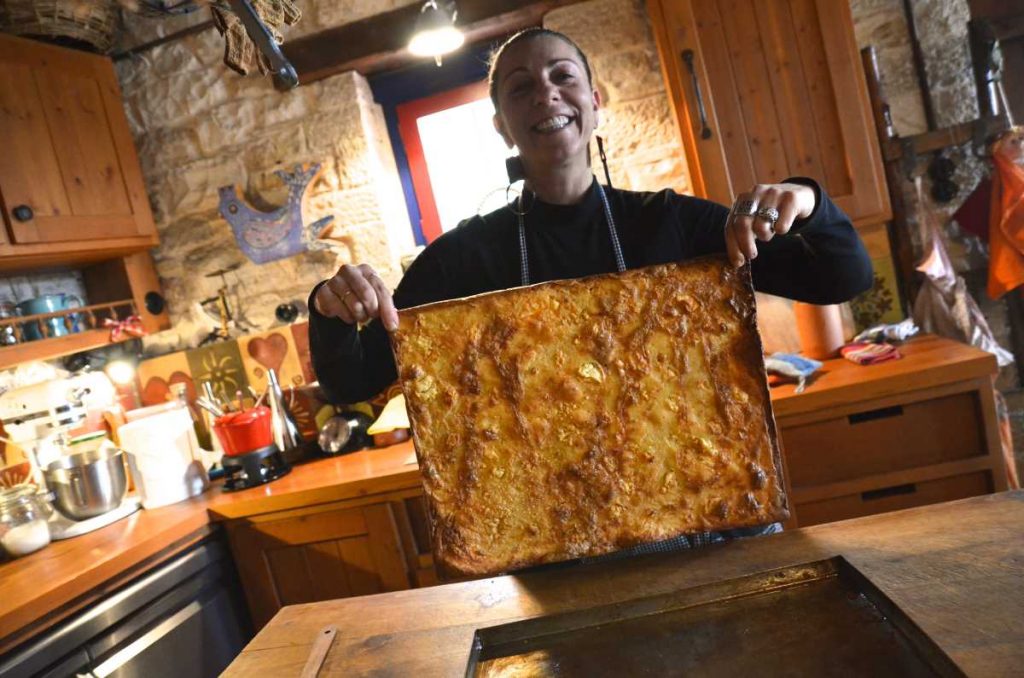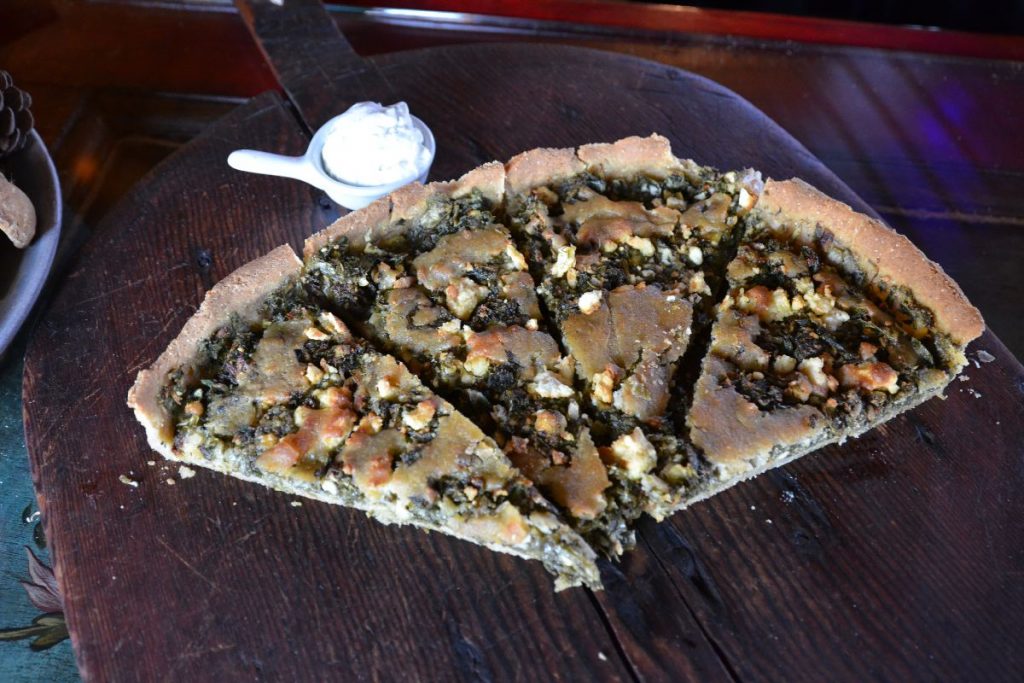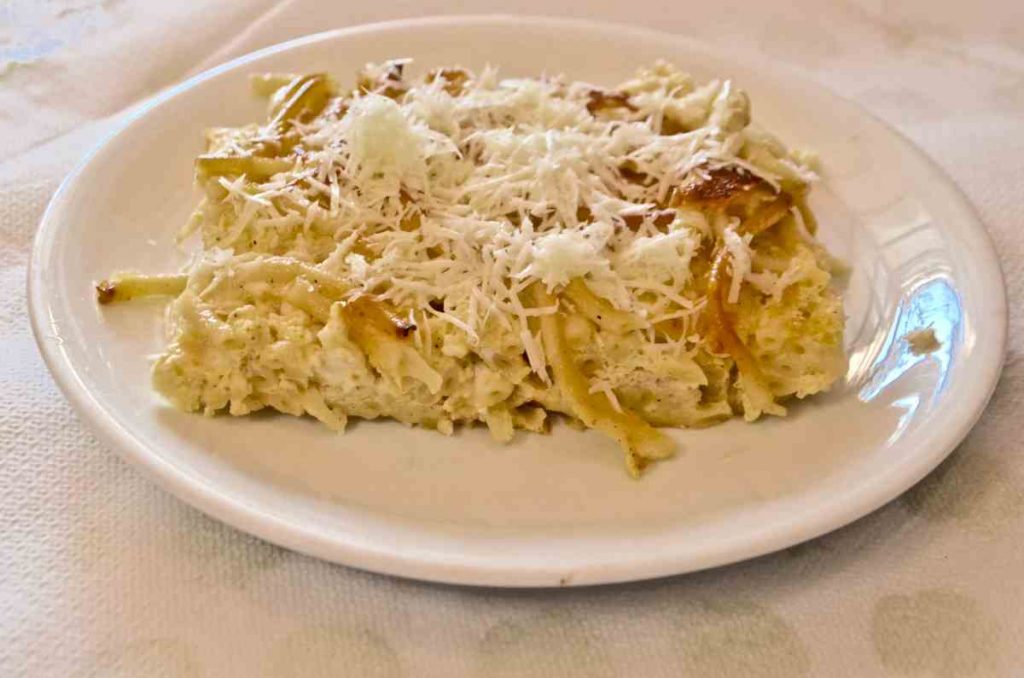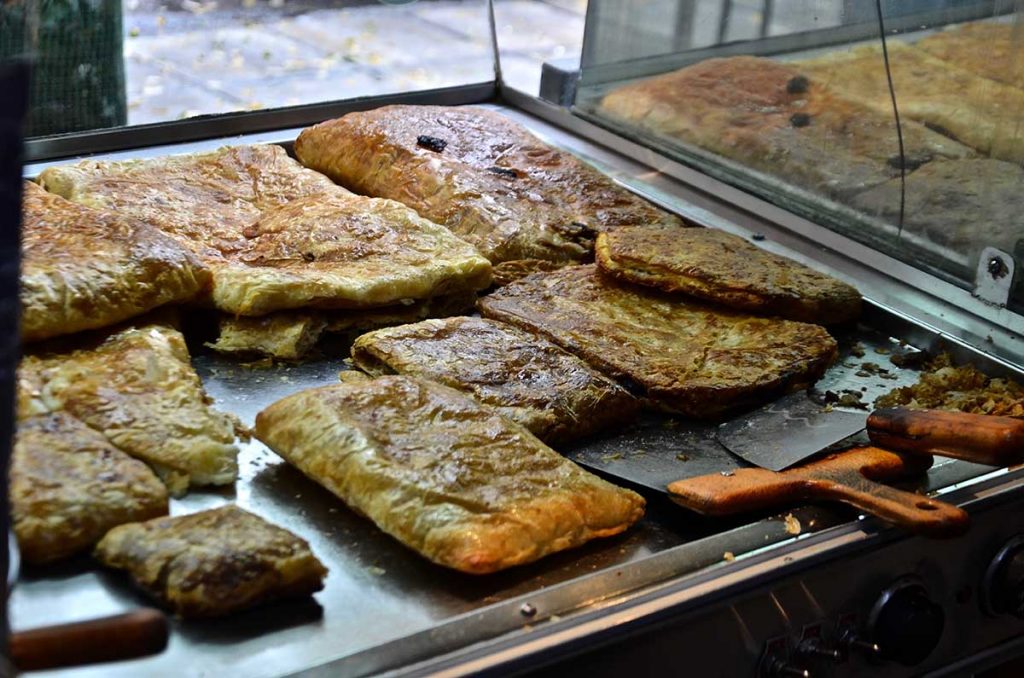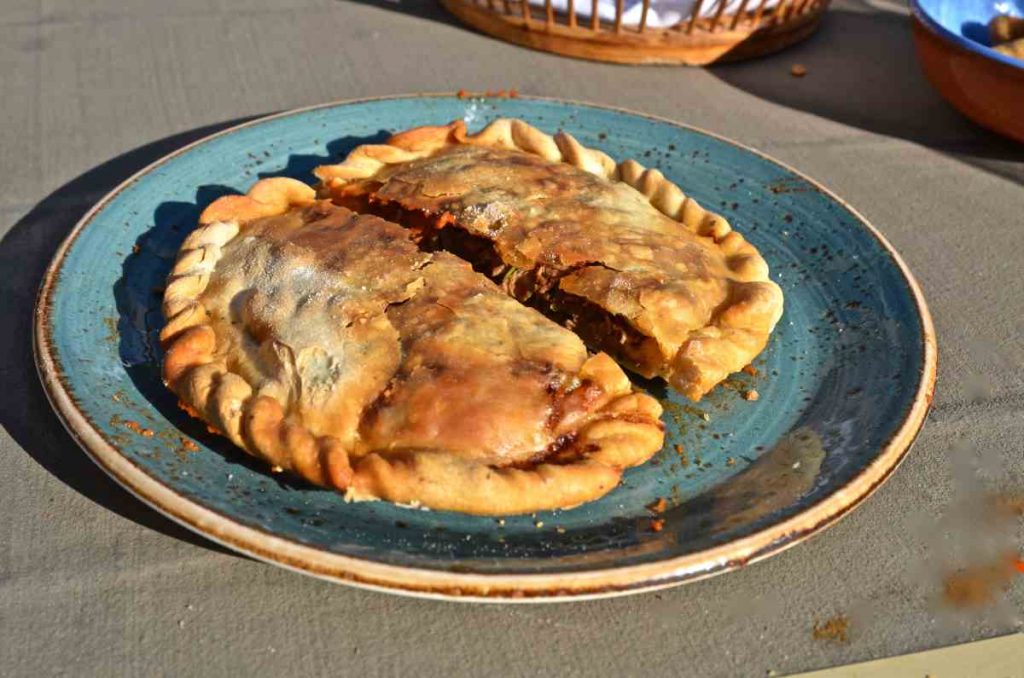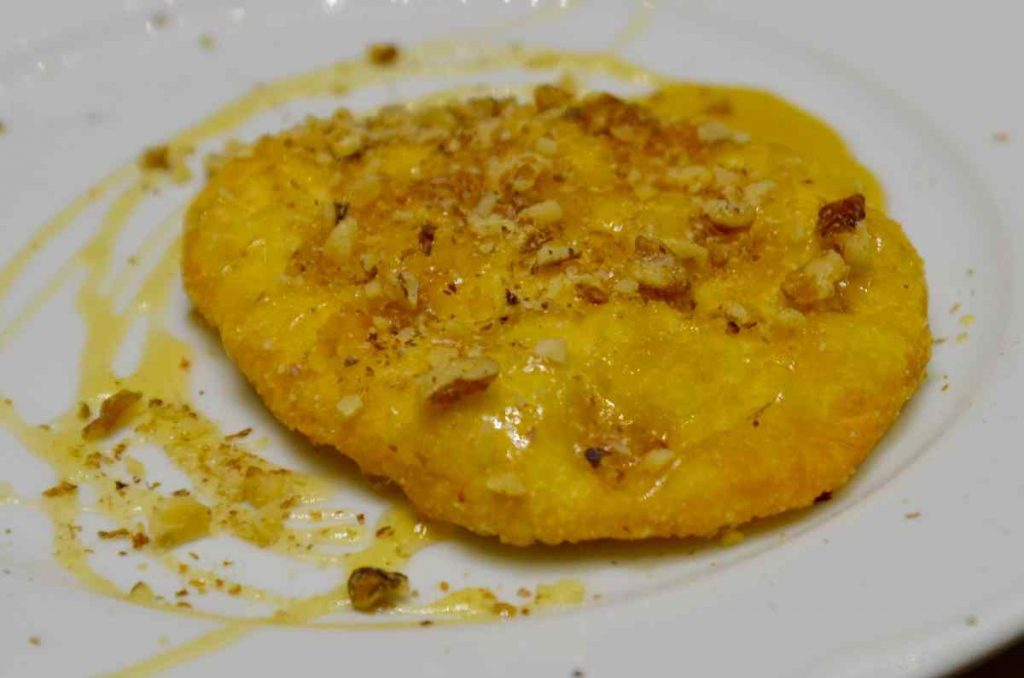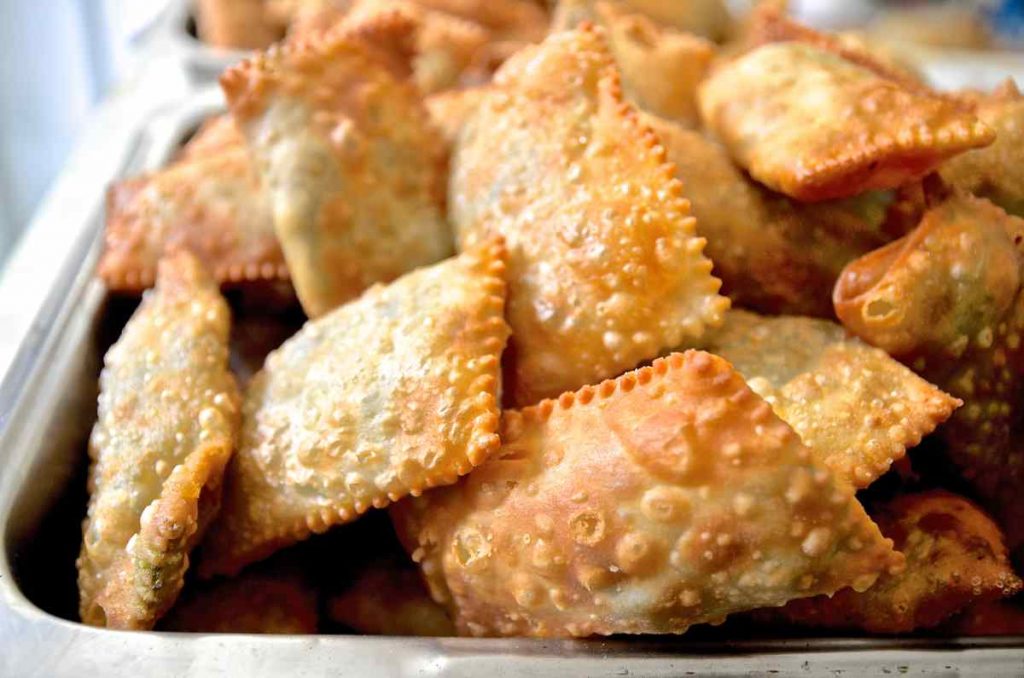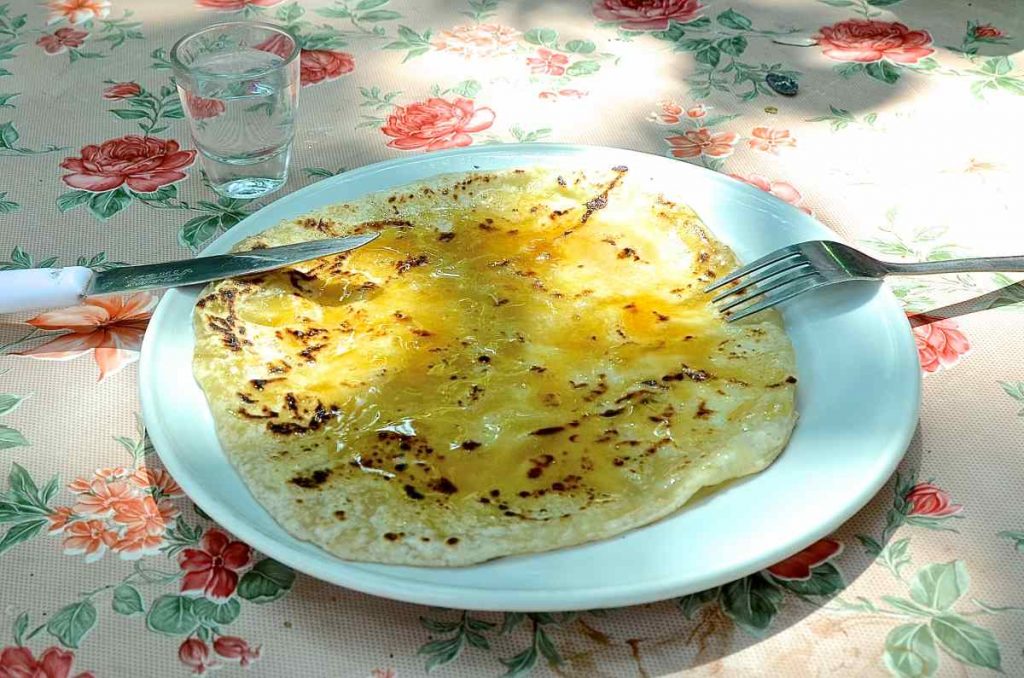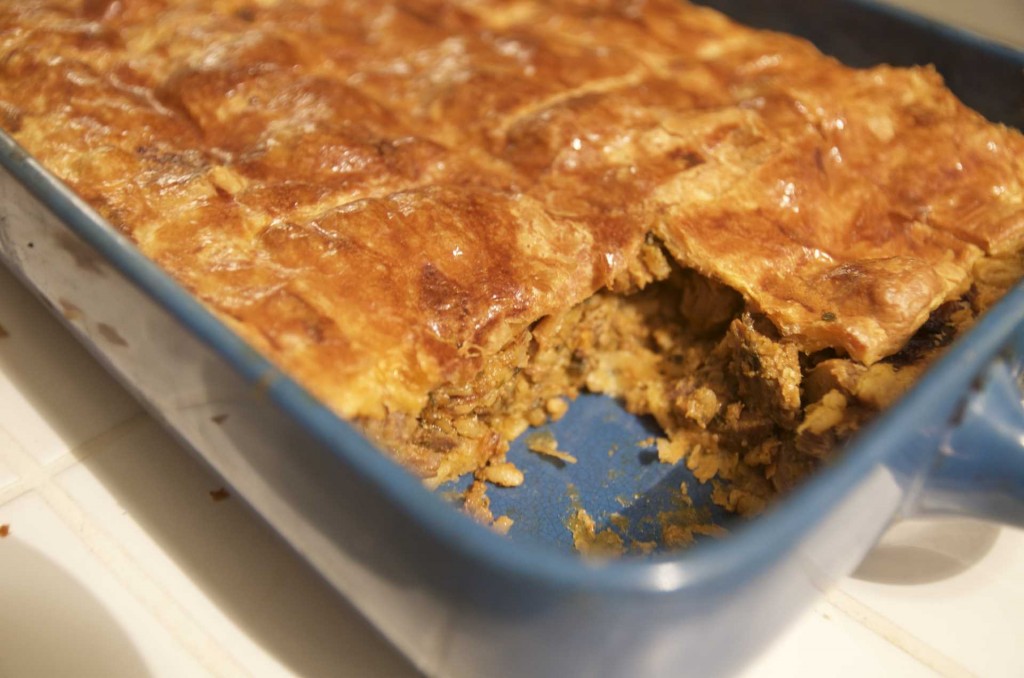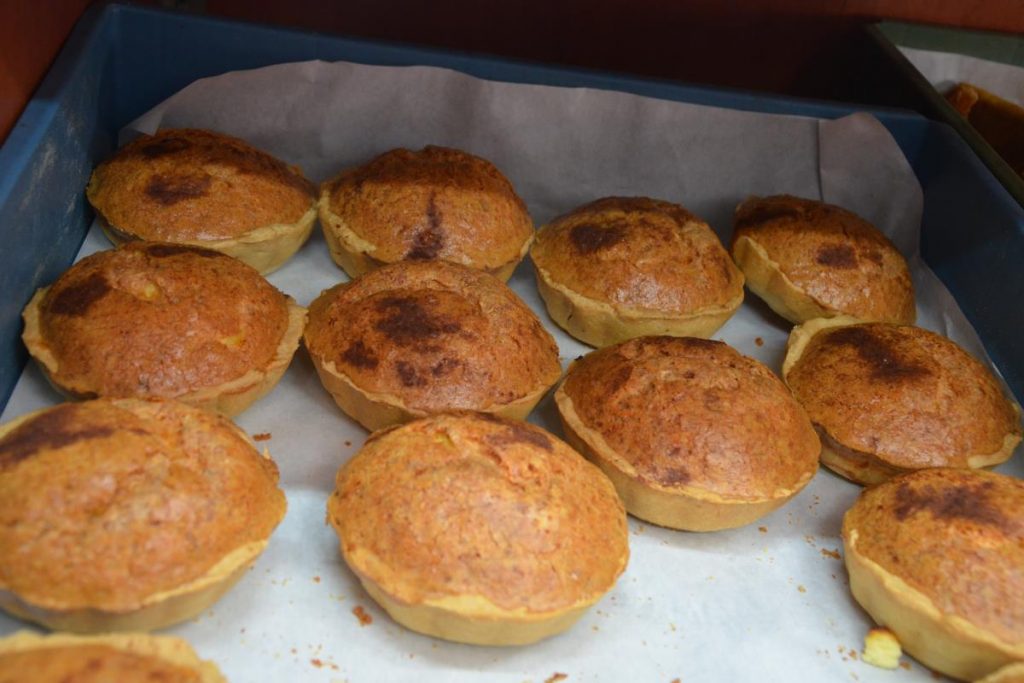Pies are one of the most typical delicacies of Greek traditional cooking and if the Greeks had the mind and knowledge, they would have promoted their own pizzas like the Italians!
They just need flour, water, salt, some local stuffing and a baking tray, to make a delicious dish that can satisfy many mouths relatively quickly in the oven or on the fire. The filling of the pie varies from region to region depending on the local products and the eating habits of each place, with the most common being cheese pies, the meat pies, the spinach pies, the green pies (with all kinds of wild grass), the cabbage pies (with various vegetables often combined with cheese or trachana) and more complex with meat filling, cold cuts, rice, trachana and various vegetables.
The most popular pie in Greece is cheese pie - the variety of its versions is inexhaustible - and it is made mainly with feta or other white cheeses, such as xinomyzithra, anthotyro, touloumotyri, manouri, but also with harder cheeses, such as kasseri, kefalotyri and gruyere.
Modern pies are nothing but variations of the most ancient pie, which in its original form was simple and was baked on hot stones or in hot embers. In ancient Athens, sweet and savory pies were famous (placentas), made from honey, cheese and oil, but also various "Loaves" (spices). At first they were made by women, but later the production passed into the hands of professional placenta makers. Many classic treatises are dedicated to the secret of their art. Particularly popular was also a dish called "Mottled", a cheese pie mixed with honey and garlic. The Byzantines also called the various pies "plakountes", like the Ancients, or "pies".
Greek literature is full of interesting descriptions of traditional pies. We choose one of Skiathitis Alexandrou Moraitini from the short story "The story of a cheese pie": "… I will open a sheet, I will pour enough butter, and cheese with beaten eggs and various myrrh and spices. I will then wrap the sheet nicely so that it becomes a stuffed roll, and then I will wrap it in a bun, and I will bake it in a pan. It will be Skopelos cheese pie… ".
In Greece there are many types of pie (seasoned or fasting), which vary depending on the ply (a thick or several minutes), the shape (round, square, spiral shape), the size (large in Epirus, Thessaly, Macedonia and small in the Aegean islands), taste of the filling (salty or sweet) and him method of preparation (baking in the oven, on a hot plate or frying in olive oil).
In the article the pies are just presented. For more details and recipes take a look at the suggested links.
Cassia pie (or flour pie) - Epirus
Cashew in Vlach is cheese, which is why the pie is called cashew pie. It is also called flour pie or of the moment or kusmeri or zarkopita (= naked, ie without a leaf, from the zarkos which in the mainland means naked). The most common continental pie, delicious and very easy to make (although the secret - how to cook it well - is hidden in the details…) has a long history, is made with simple ingredients and summarizes the invention of the cook who wants to feed quickly, deliciously and satisfactorily the whole family.
We tried it in many versions and each one had its own twist. Here we present the cassava pie, as Lila made it for us, on a cold December morning, in Anemi hostel, in Kato Pedina.
Blatsaria - Epirus
Blatsaria is one of the most famous continental pies, based on a mixture of wild herbs of the season with feta, between two layers of rich porridge based on corn flour. This mixture, when baked, becomes a deliciously crunchy crust with a golden color, as the grains of cornflour that fall flat on the pie give a shocking soft-crunchy contrast in every bite.
Macaroni Pie - Aigio
A delicacy of the moment and convenience η macaroni pie was at all times the lentil of difficult times, when there was no time and no food. Apparently it was one of the good habits left by the Italians in Achaia. A few spaghetti, milk, eggs and cheese, all homemade and the temptation was ready. The wealth of pauvera cuisine in all its glory!
In the hands of modern chefs Pasta pie became a complex dish reminiscent of pastitsio or ograten with ingredients such as puff pastry, ham, sour cream, bacon, yogurt and other ingredients.
I was impressed by the ease of preparation, but also by the purity of the taste of its ingredients and I thank Mrs. Eleni Kougia Tsagri, in Old Market of Aigio who dared to present it in her tavern, when her fashion is the most ambitious and complex delicacies.
Bougatsa - Serres, Thessaloniki
A kind of savory or sweet pie, originating from Byzantium, arrived from Constantinople to Serres and Thessaloniki and from there became a sought after delicacy that conquered all of Greece. THE BOUGATSA It is a pie made of puff pastry, usually filled with cream, cheese, minced meat, spinach, cheese. Its name is Turkish (pogaça = dough), but its origin is older, Byzantine, from Constantinople. Even after the Fall, bougatsa continued to be produced, according to 16th and 17th century testimony. Traveler Evlia Celebi reports that in Istanbul two ovens were making "bougatsa kourou », kigmali (with minced meat), peinirli (with cheese) and "sante bougatsa » (sprinkled with powdered sugar).
In Greece, it was brought by the refugees from Asia Minor, first to Northern Greece and especially to Serres and Thessaloniki. In these two cities the bougatsa landed, became popular, but, in turn, reciprocated with the above, since they also gained a reputation from it. From there the bougatsa spread all over the territory, and in the '70s-'80s it was one of the favorite delicacies of the Greeks - along with the cheese pie - as a snack and breakfast. Photo from bougatsadiko of Filippos Bandis in Toumba.
Kozouni - Mani
That's it Kozouni is a special pie that was made at the weddings of Mani and offered to the bridesmaids of the couple who were usually their cousins. This is the name of the pie kozouni (from cousin = cousin). The pie was made from homemade foil and as a content it had searched quails, onion, tomato, herbs and spices. The one pictured was made by his Maniatissa chef hotel I am, Stavriani Zervakakou.
The quail hunting in Mani took advantage of the divine gift that fell every year from Heaven in South Mani - and especially in Porte des Cailles (Porte des Cailles) which means port of quails - and mobilized young and old that inexpensive, without weapons and gunpowder, but with large abstentions and with a group coordination they collected hundreds at a time and sent them live to Europe (they exported from Gerolimenas based on data of 100.000 per year) while they ate little and picked them for their needs.
Drawn pies - Mani
Mani, both Messinian and Laconian, are not rich in their flora, and therefore in their products. A few olive trees and traces of old "terraces", narrow belts of land made by people to cultivate a drop of wheat in the steep barren mountains to have the flour to make their bread.
With these minimal materials and with the foam of salt from the rocks of the beach, the pulled pies of Mani, the pies of absolute poverty, those that nourished generations and generations.
Today, pies can be accompanied with honey and grated walnuts, with petimezi, with gruyere and honey, with convergent and whatever else one thinks. In the photo pies pulled in Flavors at sea of Maria Panagakou, in Kotronas.
The pies of Amorgos
The humble cheese pies of Amorgos I met them thanks to Moscow Mendrinou-Despotidou, a veteran cook.
Put flour in a bowl, and in the cavity, pour oil, rakomelo, salt and lukewarm water. After we make the dough, we let it "rest" for a while. We take pieces of the dough and with the manual machine or with the wooden rolling pin we open the sheet and cut it into square or round pieces. For the cheese cheese pies we use feta and kefalotyri and for the mizithropitaki mizithra, grated feta and kefalotyri. In both cases, mixtures are created to the liking of each housewife, where xinomyzythra, anthotyro and also participate. colostrum as used by Mrs. Moscow to sweeten the mixture such as eggs, pepper, grated nutmeg, cinnamon and of course mint - "Nothing happens without mint".
Sfakiani pie - Crete
Crete has a plethora of pies. Based on the dough, the cheese -mainly the soft whites (mizithres, xinomizithres, anthotyra, thick milk) -, the greens of the Cretan land (fennel, etc.) and the spices such as mint, mastic, cumin, laurel, cinnamon, different pies are created and shapes (square closed envelopes, open envelopes, flower shape like the bites of the Cyclades, closed crescents). The most popular pie anyway - along with socks- is Sfakian pie.
Η Sfakian pie is a native of Chora ton Sfakion and its fame and use has spread throughout Crete. Variations of it, the watery mizithropita of south-eastern Crete and the pure pie in Psiloritis and Sitia.
Meat pie - Kefalonia
There are many meat pies in Greece, in fact in many places in the old days on New Year's Eve they made meat pies! But the most famous is meat pie of Kefalonia. Ingredients: lamb cut into bites (preferably from a leg), pork cut into bites (preferably from a shoulder), olive oil, dried onions, garlic cloves, mint, parsley, tomato paste, Robola (white dry wine of Kefalonia), rice, egg, kefalotyri of Kefalonia grated, salt, pepper.
Skyros oil pie
If lobster spaghetti is the trademark of the coastal Skyrian gastronomy, the Skyrian oil pie is the delicacy of every place, weather and season of Skyros. They offer it in hotels for breakfast, in cafes and patisseries, in homes and of course in restaurants winter-summer. The way of making the famous Skyrian oil pie is the same, with some small variations.
Thin and crunchy or more breaded, compact or with a hole in the middle, more or less fluffy, Skyrian oil pies are accompanied by fresh mizithra or xinotyri - a soft white goat-sheep cheese with sour taste and yoghurt texture while the yoghurt texture - sweet will need the help of honey honey (plant with thorns and yellow flowers) and thrombus or petimezi. Skyrian oil pie is one of the simplest but very special flavors of the Aegean islands.
Patmos Cheese Pie
Of all the cheese pies of the Aegean islands, the cheese pie of Patmos is one of the most delicious and undoubtedly the most exuberant. In the shape of a tart (open pie) or supersized cheese pie, it has dimensions of at least 10 points in diameter and 4 points in thickness and contains three types of mixed cheeses. The dough is made with flour, butter, olive oil, brown sugar, milk, yeast, flower water, salt, pepper and a little cinnamon while the filling contains equal doses of feta, patina mizithra and fresh patina cheese with many local eggs (corresponding to each local egg) cheese pie). And of course the best patina cheese pies you will find at Christodoulos patisserie.
Ladenia and other pies of Folegandros
Folegandros, this small island, a large rock in the middle of the Pelagos, can nevertheless be proud that it has perhaps the largest variety of pies (kalasounes in the local dialect) in island Greece and in fact with beautiful names. Depending on the filling pies of Folegandros are called, oily, watermelon, herbaceous, melanin, strained, zucchini, onion.
Grasses: You can only find it until spring because then there are the wild grasses of the mountain.
Zucchini: The pie with the red pumpkin.
Cheese pie: The open round cheese pie, about the size of a saucer of fruit, is also very typical.
Ladenia: It is the same as the eponymous Kimolos pie and is made with onion, tomato and a lot of oil. (open pie)
Η watermelons ή intangible is a sweet pie made with the flesh of watermelon, honey and sesame and especially with the local variety of watermelon which is called uncut (open pie).
Epilogue
Only this minimal tour shows the richness and variety of them greek pies (the late Alexandros Giotis had counted only 170 in Epirus). There will come a time when they will come forward, to help Greek gastronomy, to find the place it deserves.

